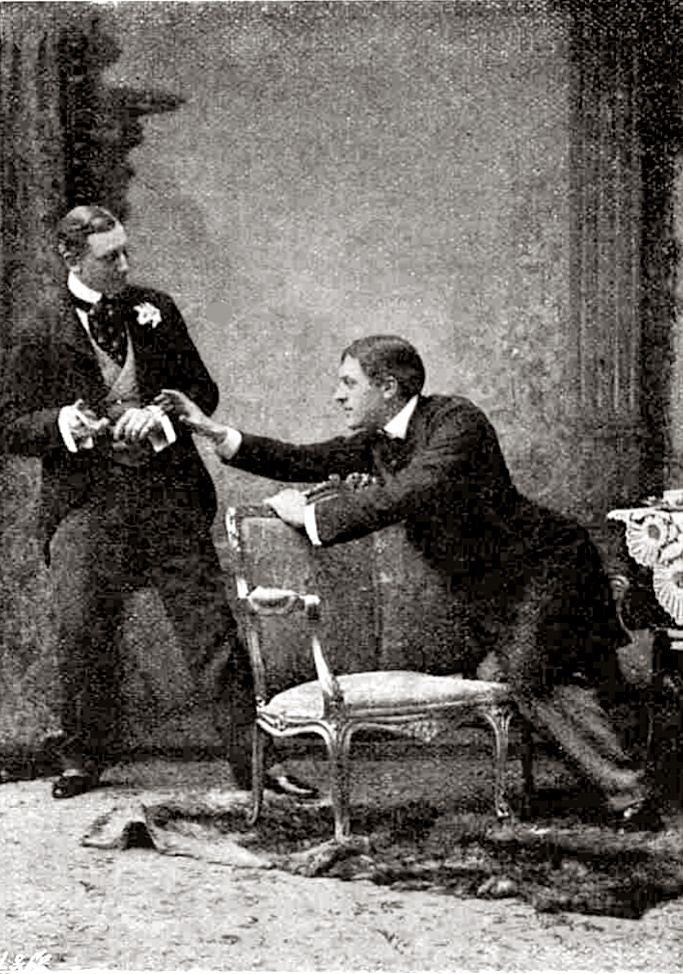My Portfolio

The Importance of Being Earnest: A Quantitative Text Analysis
The aim of this project was to automatically dissect and clean the dramatic text The Importance of Being Earnest by Oscar Wilde (downloaded from Project Gutenberg) in order to quantify the speech acts and word counts per character overall and per act.
Skills: textual data cleaning, structuring, tokenization, visualization
Libraries: SpaCy, Regex, Pandas, Numpy, Matplotlib, Bokeh
1. Preprocessing of text data
After downloading the file from Project Gutenberg and deleting the Front/Back Matter content, I open and read the file. Then I dissect the text automatially into acts:
all_lines_act = []
next_lines_act = []
with open("Wilde_ImportanceEarnest.txt", "r", encoding="utf-8") as f:
for line in f: #read in file line by line
if line.endswith("ACT\n"): #identify pattern of new act
next_lines_act = [] #reset act list for next act
next_lines_act.append(line) #collect act lines
if line.endswith("ACT\n"): #when new act starts, add previous lines to long list
all_lines_act.append(next_lines_act)
… and into speech acts per speaker:
all_lines = []
next_lines = []
act_lines = []
for act in all_lines_act:
all_lines=[] #reset for next act
for item in act:
if item.isupper() and item.endswith(".\n"): #identify the pattern of new speaker
next_lines = [] #empty the previous list
next_lines.append(item) #add lines of speaker
if item.isupper() and item.endswith(".\n"): #when a new speaker starts, add the previous speech
all_lines.append(next_lines)
act_lines.append(all_lines) #collect all speech acts for this act
With this, we can already determine the speech act number (n=3):
len(act_lines)
Next, we need to clean the list (e.g. get rid of new-line characters, punctuation, stage directions or trailing empty spaces) and restructure it to make it more managable. The output is a list with tuples, which contain the speaker (character name), the tokenized and cleaned speech act as a list of strings, and a digit indicating the act number.
speech_list = []
string = r"\[.+\]"
for i, act in enumerate(act_lines, 1):
for speech_act in act:
speech_tokens = []
speaker = speech_act[0] #separating away the speaker now, as this helps with two-token names e.g. Lady Bracknell, instead of doing this later
speaker = speaker.split(".\n")[0] #getting rid of the period and
speech = speech_act[1:] #the actual speech
speech = " ".join(speech)
new_speech = re.sub(string, "", speech) #this gets rid of directives and other descriptions in square brackets
doc = nlp(new_speech) #filtering out certain tokens such as spaces, punctuation, empty lines
for token in doc:
if token.text != "\n":
if not token.is_space:
if not token.is_punct:
if token.text != "":
speech_tokens.append(token.text)
speech_speaker = (speaker, speech_tokens, i)
speech_list.append(speech_speaker)
Now we can represent the entire text as a dataframe, which helps with filtering for and quantifying specific conditions.
2. Analysing textual data in pandas:
We convert the list into a dataframe with the columns “Character”, “Speech”, “Act”. Then we count the words for each row in column “Speech” and add the count as a separate column with the name “Word Count”.
df_act =pd.DataFrame(speech_list, columns=["Character", "Speech", "Act"])
length_speech = [len(item[1]) for item in speech_list]
df_act["Word Count"] = length_speech
df_act
With this, we can quantify the overall word count (n=18,953), number of speech acts (n=877), and average word count per speech act (n=21.61):
df_act["Word Count"].sum()
len(df_act)
df_act["Word Count"].mean()
3. More advanced analyses and visualizations
3.1. How many speech acts are there per character within the entire dramatic text?
character_df_norm = df_act["Character"].value_counts(normalize=True).apply(lambda x: round(x, 2)).rename_axis('Character').reset_index(name='Speech Act Norm')
We can discern that overall, Jack (25%) and Algernon (23%) speak most often. Accumulatively, they take up half of the speech acts in the entire play. Cecily (17%) and Gwendolen (12%) together make up a third of the speach acts overall. The other characters (Lady Bracknell, Chasuble, Miss Prism, Lane and Merriman) speak only very little.
3.2. How many speech acts are there per character and per act?
3.3. How many words are there per character within the entire dramatic text?
new_df = df_act.groupby(by=["Character"])['Word Count'].sum().rename_axis('Character').reset_index(name='Total Words')
new_df_sort = new_df.sort_values(by=['Total Words'], ascending=False, ignore_index=True) #reorder by descending value
overall_total = df_act["Word Count"].sum() #number of total words
new_df["Rel Freq Total Words"] = (new_df["Total Words"]/overall_total).apply(lambda x: round(x, 2))
sorted_new_df = new_df.sort_values(by=['Rel Freq Total Words'], ascending=False, ignore_index=True) #reorder by descending value
After plugging the result into my Bokeh code snippet, we get the following results:
When it comes to the number of words used, rather than the number of times they spoke, Jack (22%) and Algernon (22%) speak the most again. This is, however, followed by Lady Bracknell (16%), Cecily (16%) and Gwendolen (12%). This already shows us that Lady Bracknell might not speak often, but when she does, many of her speech acts must be rather long.
3.4. How many words does each character use per act?
df_act1 = df_act[(df_act.Act == 1)]
character_df_act1 = df_act1["Character"].value_counts(normalize=True).apply(lambda x: round(x, 2)).rename_axis('Character').reset_index(name='Speech Act')
df_act1_wc = df_act1.groupby(by=["Character"])['Word Count'].sum().rename_axis('Character').reset_index(name='Total Words')
df_act1_wc_sorted = df_act1_wc.sort_values(by=['Total Words'], ascending=False, ignore_index=True) #reorder by descending value
overall_total_act1 = df_act1["Word Count"].sum() #number of total words
df_act1_wc_sorted["Rel Freq Total Words"] = (df_act1_wc["Total Words"]/overall_total_act1).apply(lambda x: round(x, 3))
sorted_new_df_act1 = df_act1_wc_sorted.sort_values(by=['Rel Freq Total Words'], ascending=False, ignore_index=True) #reorder by descending value
Again, afterpluggin these results into my Bokeh code snippet, we get an image for the first act.
In the first act, Algernon (35%) and Lady Bracknell (30%) comprise collectively two thirds of Act 1, followed by Gwendolen (19%), Jack (12%) and Lane (3%).
Repeating the same procedure for Act 2 and Act 3, we get the other two images.
In the second act, Algernon (38%) and Cecily (24%) make up the vast majority in terms of words spoken. The other characters amount to respecively 16% (Jack), 15% (Miss Prism), 10% (Merriman), 9% (Gwendolen) and 3% (Chasuble).
In the final act, Algernon dominates again with 25%. The remaining characters yield the following results: Cecily (15%), Miss Prism (6%), Merriman (5%), Jack (5%), Lady Bracknell (3%), and Gwendolen (2%).
 Image: https://en.wikipedia.org/wiki/File:Algy-and-Jack-1895.jpg
Image: https://en.wikipedia.org/wiki/File:Algy-and-Jack-1895.jpg
References:
Wilde, Oscar. 1895. The Importance of Being Earnest. Published on: Project Gutenberg (https://www.gutenberg.org/cache/epub/844/pg844.txt, last accessed July 12th, 2024).